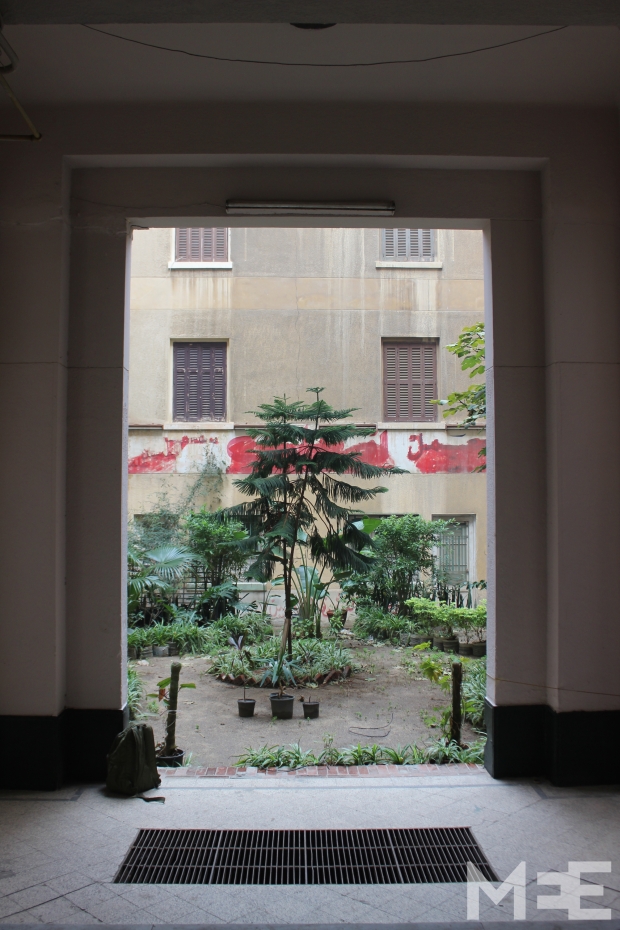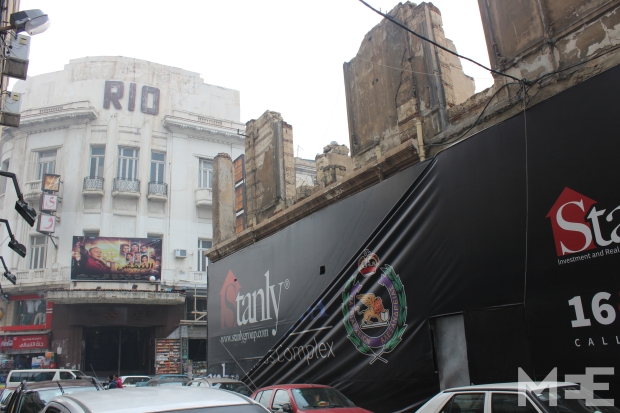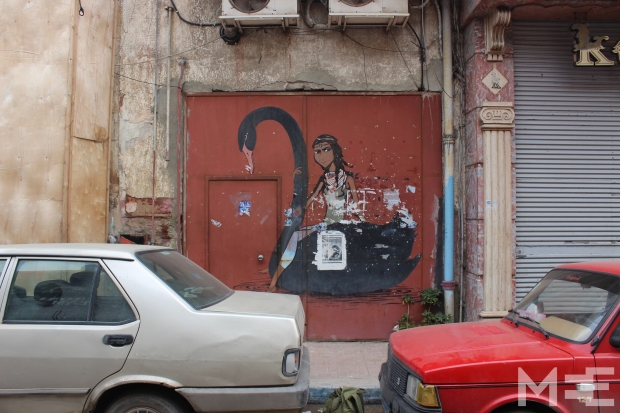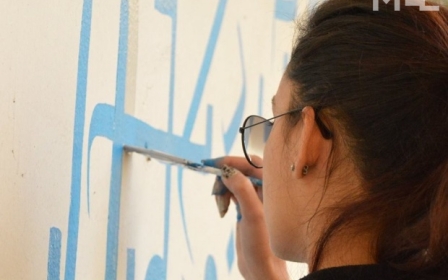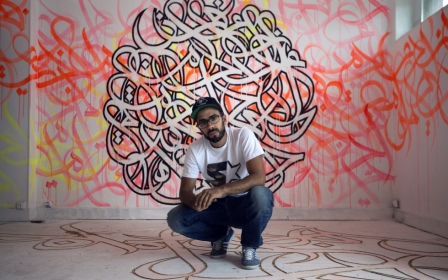Understanding Alexandria’s embattled urban heritage

“The situation of Alexandria is most curious,” wrote British novelist E.M. Forster in his 1922 Alexandria: A History and a Guide. “To understand it we must go back many thousand years.”
Forster promptly does, taking the reader to the city’s roots; from Alexander the Great, Antony and Cleopatra, the Ptomely dynasty right through to Napoleon’s 1798 arrival at Alexandria’s old port and beyond. By walking in a linear line through the city’s past, Forster can then amble around its present. Forster completes his two-part “history and a guide” connected by dot-to-dot references, on which “the chief utility of the book depends,” he wrote, because they “help [the reader]…to link the present and the past.”
Today, Alexandria is still a curious place, where past and present live uncomfortably beside one another.
That Alexandria, a new documentary by Sherif Fathy Salem which premiered in Cairo on 29 January, has also attempted to explore that relationship.
“I want young Egyptians to know more about their roots,” the filmmaker said, during a recent interview with state-owned newspaper Al-Ahram. “There needs to be a national project to spread awareness about history and identity. We are Pharaohs, Copts, Muslims, Arabs and Mediterraneans.”
The idea of past-being-present in Alexandria visibly flows through its architecture, as well. History is seen in the colonial boulevards and classical ruins. It is felt in archaic hotels and hey-day cafes polished and re-opened by international conglomerates, telling stories of ancient, Jewish and European communities since disappeared. But, history is also destroyed.
Many of the 1,135 buildings supposedly protected by a 2006 preservation order are under threat, or in a state of disrepair. A chaotic post-revolution period of unplanned and illegal construction has also taken its toll on the city’s planning landscape.
There are high-profile demolition cases, like the Villa Ambron, once home to Nobel Prize nominee and Alexandria Quartet author Laurence Durrell, but the city is full of heritage sites - and lucrative real estate opportunities.
However, opinion is divided about how best to save the city’s embattled urban heritage.
Preservation
The Description of Alexandria, a collective of architects and artists, writers and residents, is one group that aims to preserve the city’s history. This month they unveiled the first electronic issue of its journal, Casa Di Riposo: The Italian Retirement Community of Chatby, part of its aim is to “document the cultural and architectural heritage of Alexandria,” according to founder Mohamed Gohar, who has been sketching the city since 2009.
“Alexandria has very little written data about itself,” he explains in a cafe in downtown Alexandria. “The last book describing [the city] was Forster's, so we don’t know exactly what Alexandria looks like.”
While photography here and there goes some way to capturing the city, he argues, “random photographs here and there don’t give you a true picture of a place.” Instead Gohar aims for a more exacting architectural rendering of the city’s make-up. “Mainly, I would like to present Alexandria…as it really looks like [at the time of publication],” whether that means capturing buildings new and buildings about to disappear. “This is the description.”
Sahar al-Dourghamy, a local artist and arts lecturer at Alexandria University, similarly talks about heritage’s “energy.” She suggests that when a building is destroyed, not only culture, but also an emotional attachment to its past, is lost - something “inextricably tied” to Egypt’s socio-political situation, then and now.
“Here, the city has no power to keep itself,” she says. “When the English destroyed the city in 1888, there was a motivation to rebuild…and I feel like there was a power in this.” The ghost of the 2011 uprising is somewhere in amongst Dourghamy’s words; power lost, the restorative value of structures outside authority, stoicism.
Demolition
For some activists and academics in the city, the threats posed to Alexandria’s heritage are perhaps best symbolised by an investment and real estate development firm whose logo adorns statues, buildings and other ‘beautification’ projects throughout the city - the Stanly Group.
Stanly has commandeered some of Alexandria’s most iconic historic sites, including King Farouk’s royal palace in Muntazah, turning them into plush emblems of luxury living and shiny, glass-fronted privatisation.
Cinema Rialto, once home to some of Egypt’s most famous cultural icons like Abdel Halim Hafez, is one such project.
In April 2013, Stanly razed the 1,000-seater venue, making way for a mall complex. The plan now is to make the new site “one of the pleasurable shopping, dining, leisure and entertainment destinations in Egypt,” according to Stanly’s website, kitted out with “a collection of world-class luxury brands, with a range of premium fashion, and lifestyle stores and bank's commercial spaces [sic].”
Dourghamy was one of the heritage activists who watched the demolition as it happened, bit by bit.
“Rialto was closed for many months, and all the time we were walking beside it, we’d ask: ‘Why is it closed?’” Guards outside talked about renewal - like a Stanly banner outside the site. “We used to joke that they’d destroy it. But then that’s what they did.”
Filmmaker Sherif Fathy Salem also remembered the event as a landmark disappearance, during his Al-Ahram interview. “Alexandria started losing its identity in the mid-seventies,” he said. “Cinemas became marriage halls, and the famous Rialto Cinema was demolished in 2013.”
Stanly meanwhile denies it is destroying Alexandrian culture. Its website instead talks about “raising standards,” even “aiming beyond the highest standards.” While the company did not respond to requests for interview, a Stanly spokesman told Al-Monitor in late 2013 that the company felt “a responsibility…to be like a truck powering the economy.”
But even within the academic-activist community resisting the demolition of historic buildings, opinions are mixed about how to stop this happening.
“It won’t come from activism,” Gohar says with a wry smile. “It’s a governmental issue.” He says that proper urban planning, rather than a de facto urbanist approach, will help.
Muhammad Nabeel is an urban researcher in Alexandria who works for a local urbanist NGO, the Gudran Association for Art and Development.
“Documentation is important for sure, but what are the real positives for the residents of Alexandria? They have their own problems... We are appreciating the concrete - not the people of the city.”
“We have people from academia, professors and so on, trying to create awareness about the cosmopolitanism of the city, but they never listen to the residents,” Nabeel claims.
Preserving the city’s history is essentially a cultural project.
“People started to look at us as utopians, who don’t see ordinary life,” Dourghamy admits. “People around the [Cinema Rialto] site - from the shops and cafes and so on - were very silent…until they discovered that [Stanly] were building a mall. Then they started to make a noise.”
By then it was too late.
Hope
“If you ask any youth in Alexandria about the historical importance of the city or the significance of this building, he won’t care - because people are not using these spaces,” Nabeel argues. "The Italian Consulate [an impressive Mediterranean-looking construction on the Corniche] was transformed into AlexBank. So what difference does that make to the locals? Nothing.”
He says this is the “main struggle” in Alexandria’s embattled heritage scene, making heritage more than just history.
“If people could occupy such spaces, benefit from them; if the government could purchase them from the owners and transfer them to any activity that would serve the community - in this case only, you have a direct connection between the people and the space.”
Cabina is one of Gudran’s projects. A gallery, library and performance venue, cultural space and meeting-point, Cabina also marks the old back-end of Cinema Rialto, and was abandoned until Gudran took over in 2010.
Here, Alexandria’s curious relationship between past and present is clear to see. Gudran’s programme manager, Abdalla Daif, says it is about “renovating neglected architecture into artistic hubs to serve the surrounding community.”
“Cabina gives a clear example of how to run an art space in the city,” he argues. “It’s open to the street [and] gives an opportunity for everybody to participate inside it. At the door, nobody asks you: ‘Why did you come? Who are you?’ or asks you for ID.”
While a cultural centre that hosts symposiums on Marxism and urbanism might not be definitively accessible to everyone in the surrounding community, Gudran is also starting projects in the west of Alexandria, an area full of buildings and infrastructure, much of which harks back to the 19th century. It’s also an area that developers are beginning to eye up - possibly making it the next major fault-line in historic Alexandria’s ongoing battle to “keep itself.”
“Demolishing buildings destroys our cultural heritage generally and, if we’re thinking about investing in buildings, we should re-think and re-use spaces in other ways,” explains Daif.
“First, out of respect for the heritage, but also to help coming generations understand what was there in the city before.”
New MEE newsletter: Jerusalem Dispatch
Sign up to get the latest insights and analysis on Israel-Palestine, alongside Turkey Unpacked and other MEE newsletters
Middle East Eye delivers independent and unrivalled coverage and analysis of the Middle East, North Africa and beyond. To learn more about republishing this content and the associated fees, please fill out this form. More about MEE can be found here.


